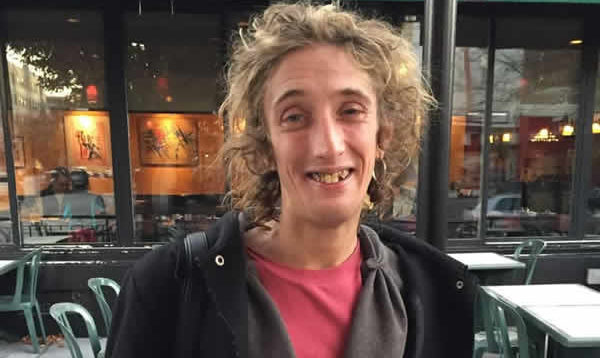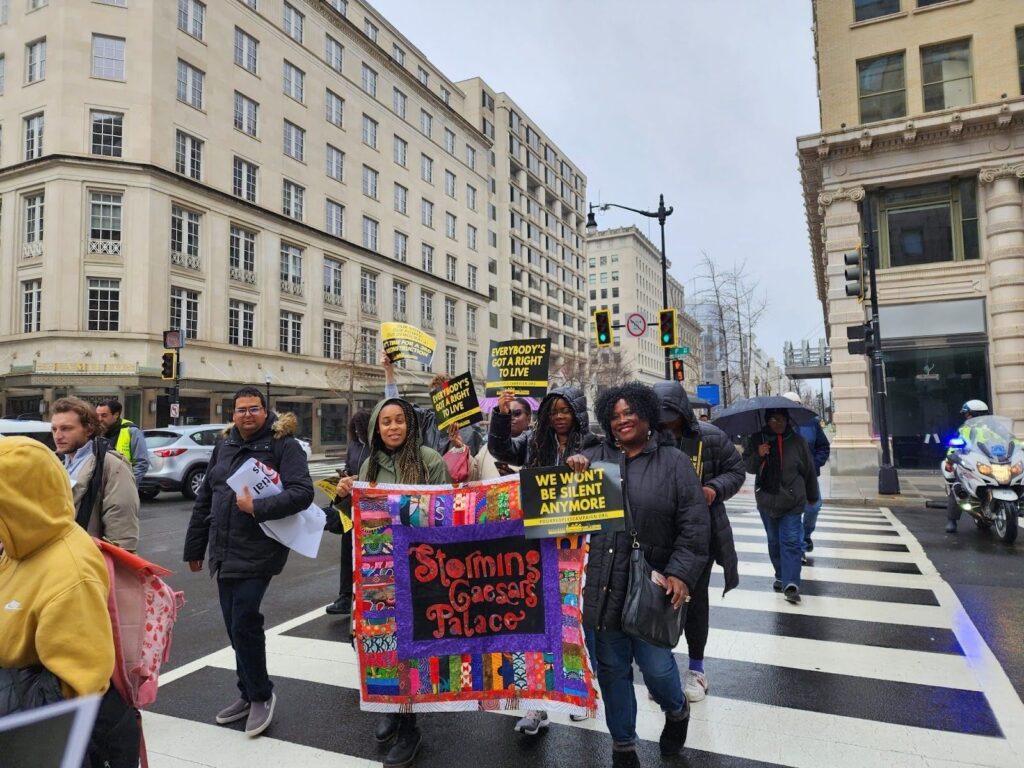Alice Carter wanted to be known as a famous rap artist and perhaps that may yet be if her whole story were ever to be told. As it turns out, Alice’s main claim to fame at this point is an “unprecedented” (in the words of the Washington City Paper) case study titled “Lessons From the Life and Death of Alice Carter.”
Let me say up front that I appreciate and even applaud the efforts of Clara Hendrickson, who wrote the case study; Street Sense Media; and all those who had a hand in this Herculean task. And the study makes no bones about Alice’s mental health and self-medicating and substance use issues. I lived these issues with Alice since meeting her in May 2006.
Alice lived with me off and on, mostly on, for nine years. No one in D.C. knew her better than me. Not even a single case manager knew Alice like I did. Weekly appointments are not like actually living with someone.
Yet even as aware as I was of her multiple encounters with police officers, I was a bit taken aback after reading the case study and seeing that even for Alice her arrest record was long. Still, the study didn’t do enough to try to explain the “why’ behind Alice’s beleaguered life. Oh yes, it did adequately address the fact that Alice suffered from chronic mental illnesses including schizo-affective disorder. But the study does understandably fail to sufficiently convey the pain of her very existence. I say understandably because the study’s authors — despite speaking with me — failed to really make the effort to do more in-depth interviews with those who knew Alice best. Or perhaps a viewing of the 2001 Best Picture Academy Award winning film “A Beautiful Mind” is in order?!
Alice unfortunately comes across in the study largely as some kind of sociopath who menaced D.C. While Alice certainly could have her challenging moments, she was for the most part a peaceful and peace-loving person. People who knew her best knew this about Alice. It’s a shame that this doesn’t come through more in the study.
I will credit the authors for mentioning Alice’s obsession with letters and numbers. This was helpful in providing insight as to how Alice’s mind worked. But a little more digging by the study’s authors would have revealed what an integral part of her psychosis this was. The letters K and X and the numbers two and six for example were always bad. It didn’t matter whether these otherwise rather neutral numbers were on a license plate or a T-shirt. To Alice, they had deep meaning.
Time and again, I did my best to give consistent reports of Alice’s behaviors and conditions to case managers, public defenders, psychiatrists, and others all to no avail. I tried desperately to get Alice effective help from folks who might be able to understand the full breadth and depth of her problems.
Let me give you a glimpse into the wonderland of Baby Alice and maybe you’ll better understand what it was like to be Alice Carter.
Back when I had a real life with a real job, there was a round antique table used for small conferencing in my office next to my desk and that of my officemate. One day, I noticed “BA167” had been scratched into the table’s surface. My officemate noticed the etching about the same time I did. Between the two of us we deduced it must’ve been the work of her youngest son. But weeks later I put it together based on Alice’s thinking.
The BA stood for Baby Alice. The number one is because she was number one. The six was for if things ended bad and seven was for when things ended for the good. That was her thinking. She talked about it all the time.
Alice often imagined that total strangers were muttering hateful remarks to her. And that was problematic at times. But what was truly heartbreaking with Alice was that there were times when total strangers did in fact mutter hateful remarks at her, often because she was transgender. She couldn’t distinguish between threats that were real to her safety and those just in her head.
The study mentions numerous occasions where Alice threatened others with anything from box cutters to broken bottles. What it fails to fully address is the extent to which Alice’s situation in particular—being transgender in a city not as accepting as advertised—exacerbated her problems. She was actually threatened and assaulted on numerous occasions just for being transgender. So sorting the real and imagined threats was a constant struggle.
The numeric setting on the TV volume had to be very carefully selected so as not to end in a two, for some reason that made sense only in Alice’s tortured mind. Thirty-one was best.
Alice imagined big name rap artists knew of her and some were out to get her according to messages in their music.
So there you have several examples of just how tormented Alice’s thinking was. She wasn’t some soulless miscreant roaming the streets of D.C. looking for people to terrorize. She had a conscience. She just wanted to be accepted, and the pain of society’s rejection drove her to an early death.
Time and again, the study documents Alice’s refusal to get the treatment she so desperately needed. While it hints at the question of Alice’s fitness to make good decisions for herself, it fails to mention that I pleaded in vain to get those working closest to her to understand this was a fundamental problem: Alice wasn’t capable of making consistently good decisions.
She was very clever and adept at hiding her symptoms when she knew she needed to: with the psychiatrist. You see, something I knew about Alice is that the last place she would ever want to be held against her will was a psychiatric ward. She’d much prefer general population jail over being with what she called a bunch of crazy people.
This could and should have been in the study. It would have helped make Alice a bit more sympathetic and understandable.
I understand the purpose of this case study. It’s certainly not to soothe the feelings of loss for those who knew and loved her most. It serves a higher purpose. But that higher purpose is best served by being better informed.








